Appropriately enough, the creator of this space, David Gelatt, is not only an avid gardener but has long been a devotee of the performing arts.
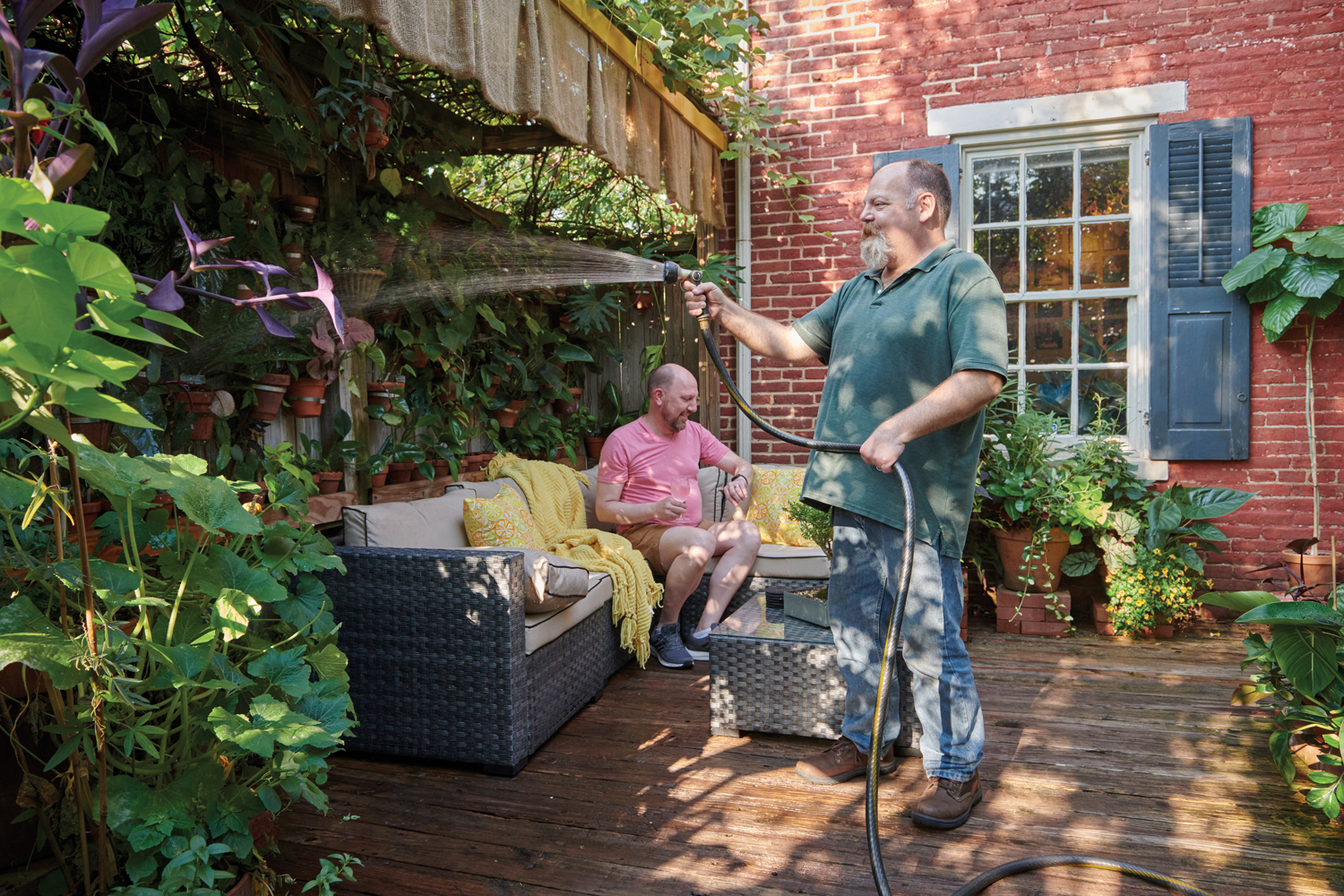
David thoroughly waters the plant wall about twice a week in summer. The natural drip-irrigation system ensures that all plants receive moisture. (Kevin is well aware that David is in his own little world when he’s working with his plants.)
History is another of David’s interests and the house he shares with his husband, Kevin Peters, has an intriguing tale of its own. Located on a side street in Lancaster’s East Side, David has a suspicion that the property, which sits just off Plum Street, may have once been owned (or leased) by Lancaster’s first mayor, John Passmore. David explains that in the late 1700s and early 1800s, Lancaster City’s eastern boundary ended in the vicinity of Shippen Street or perhaps Plum Street. Beyond that, the rural landscape held orchards, garden plots and farm fields. As the city expanded, distilleries and similar businesses gravitated to the area.
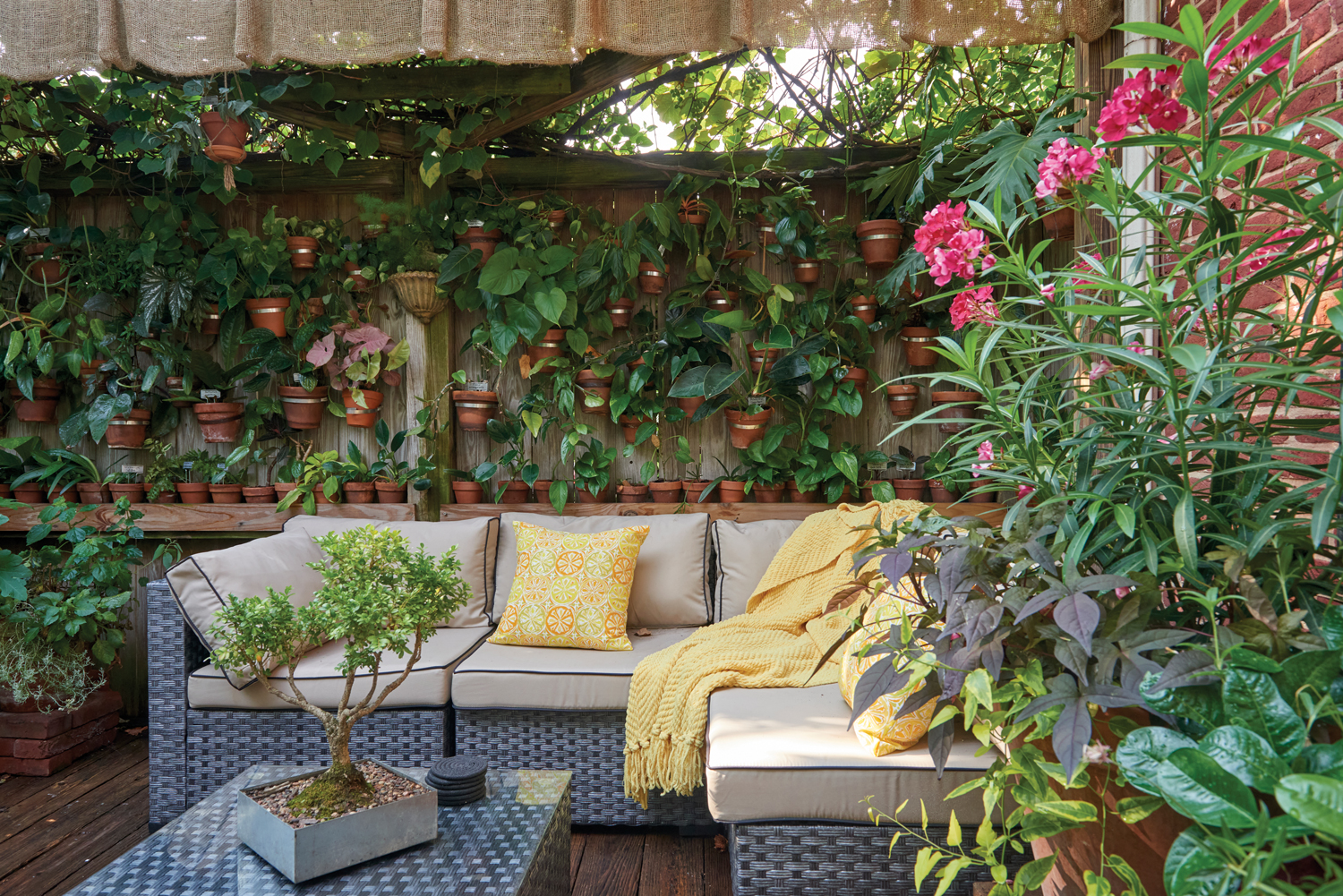
Once warm weather arrives, David moves his plants outdoors, where they help to create a living green room in the garden. Other plants include fragrant and colorful bloomers (such as oleander), as well as a 20-year-old bonsai David has been training for the past 10 years.
Passmore, who was appointed as Lancaster’s first mayor by Gov. Simon Snyder in March of 1818, lived at the corner of North Shippen and East Orange streets. According to Uncharted Lancaster, Passmore was the third owner of the house that, to this day, retains unique historical “amenities,” including a curbside stepping stone (which provided easier entry and exit from a carriage), a hitching post, a busybody mirror (which allowed people on the second floor to see who was at the front door), a sundial (above the front door) and a fire mark (indicating that in the case of a fire, either a private or volunteer company would render assistance).
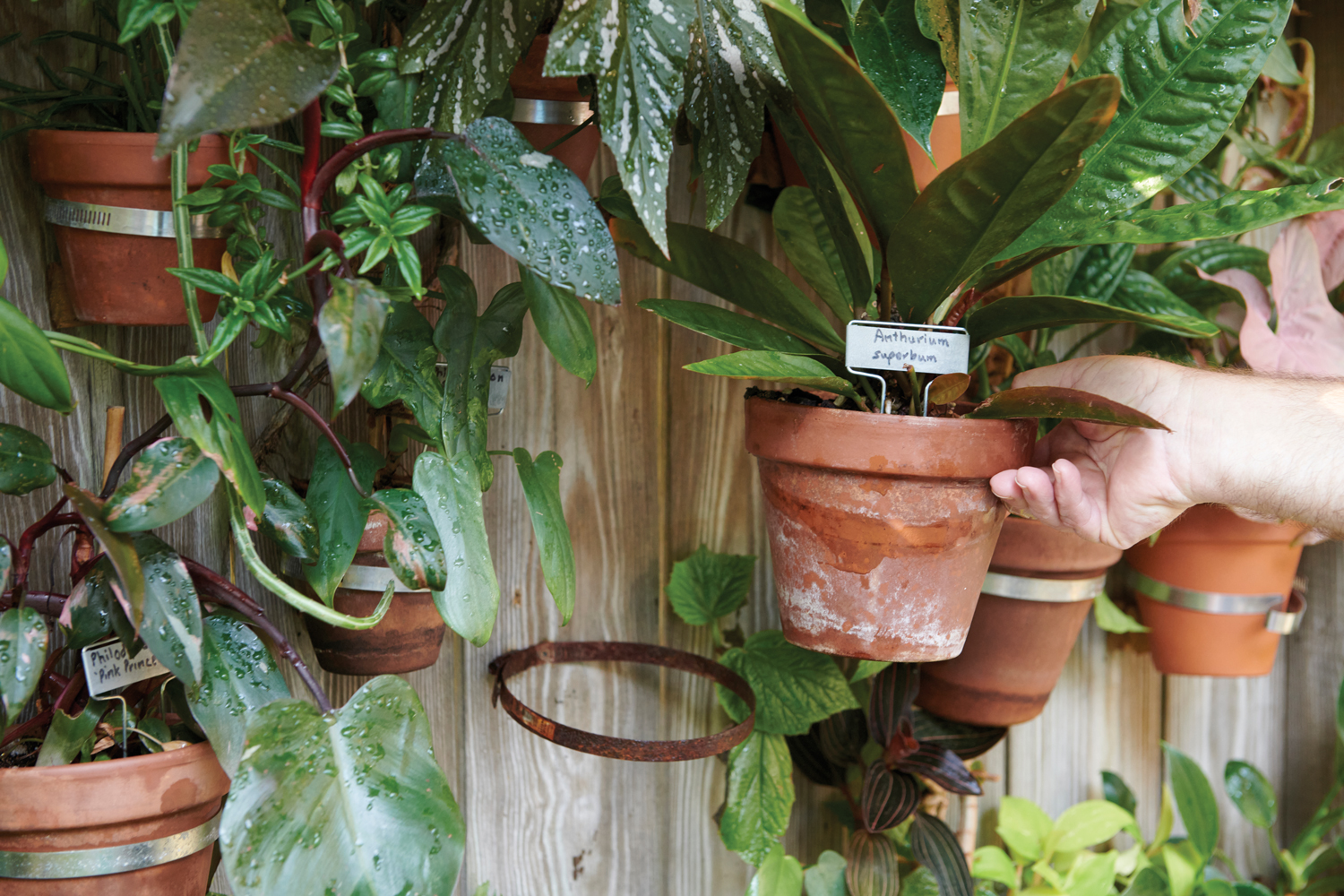
Hose fittings from the plumbing department at Lowe’s provided an economical answer as to how David could attach terra cotta pots to the fence. All plants are labeled.
Through research, David has learned that Passmore, an attorney who had the reputation as being colorful, eccentric and “larger than life” (he weighed nearly 500 pounds), harbored an interest in apples and maintained an orchard not far from his home. The fact that apple trees exist in the vicinity of their home has prompted David to wonder if it was the site of Passmore’s orchard. Another clue relates to the house in which David and Kevin live. It was once a cidery, earning the name “Vinegar House.” (The timeframe is consistent, as the cidery was built in the late 1700s or early 1800s.) His interest in genealogy prompted David to research the house’s succession of owners. So far, he’s found nothing that relates to Passmore, but he plans to keep digging.
When David and Kevin bought the house 15 years ago, the back of the property was far from inviting. “Let’s see,” David says, “It was basically an open space with a scraggly rose bush, a black walnut tree, a cherry tree and a 6-foot-high tree stump.” Layers of differing types of gravel comprised the “landscape.” As David recalls, “I’d shovel gravel into a hole that was filled with another type of gravel. It was never-ending!” To remedy the situation, he had a truckload of topsoil brought in to create a blank canvas. “I built beds using stone and leftover shingles,” he recalls. “There was nothing at the front of the house either, so I put beds in there, too.”
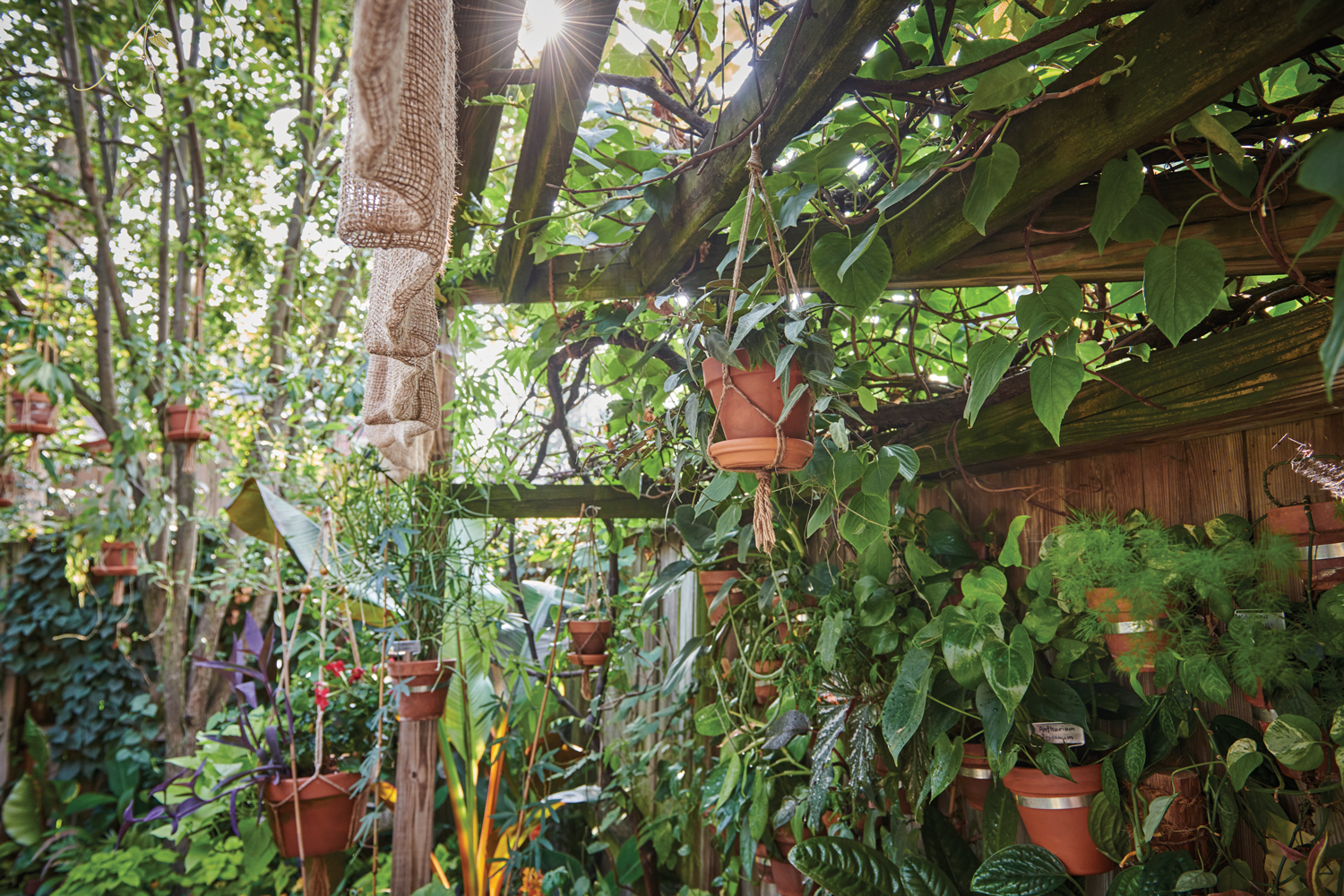
In this pocket garden, every square inch is utilized. This getaway is perfect for enjoying dinner al fresco, listening to music and unwinding on a Friday night.
The next project entailed building a fence. “I had never built a fence in my life, so I followed directions on YouTube,” he explains. After that, he installed a brick walkway. “I had never done that either,” he says of once again consulting YouTube. “Then we went on a great shopping trip,” he recalls, admitting that he loses all aspects of common sense whenever he is in the vicinity of a greenhouse. “We bought a dawn redwood and realized too late that they get really big!” he laughs.
The not-so-joyous side of gardening presented challenges when the cherry tree became infected with bores and a cypress tree developed a fungal infection. Trial-and-error describes the way in which he found flowering plants that liked the shade-filled space. “Eventually, we got to a good place,” David says.
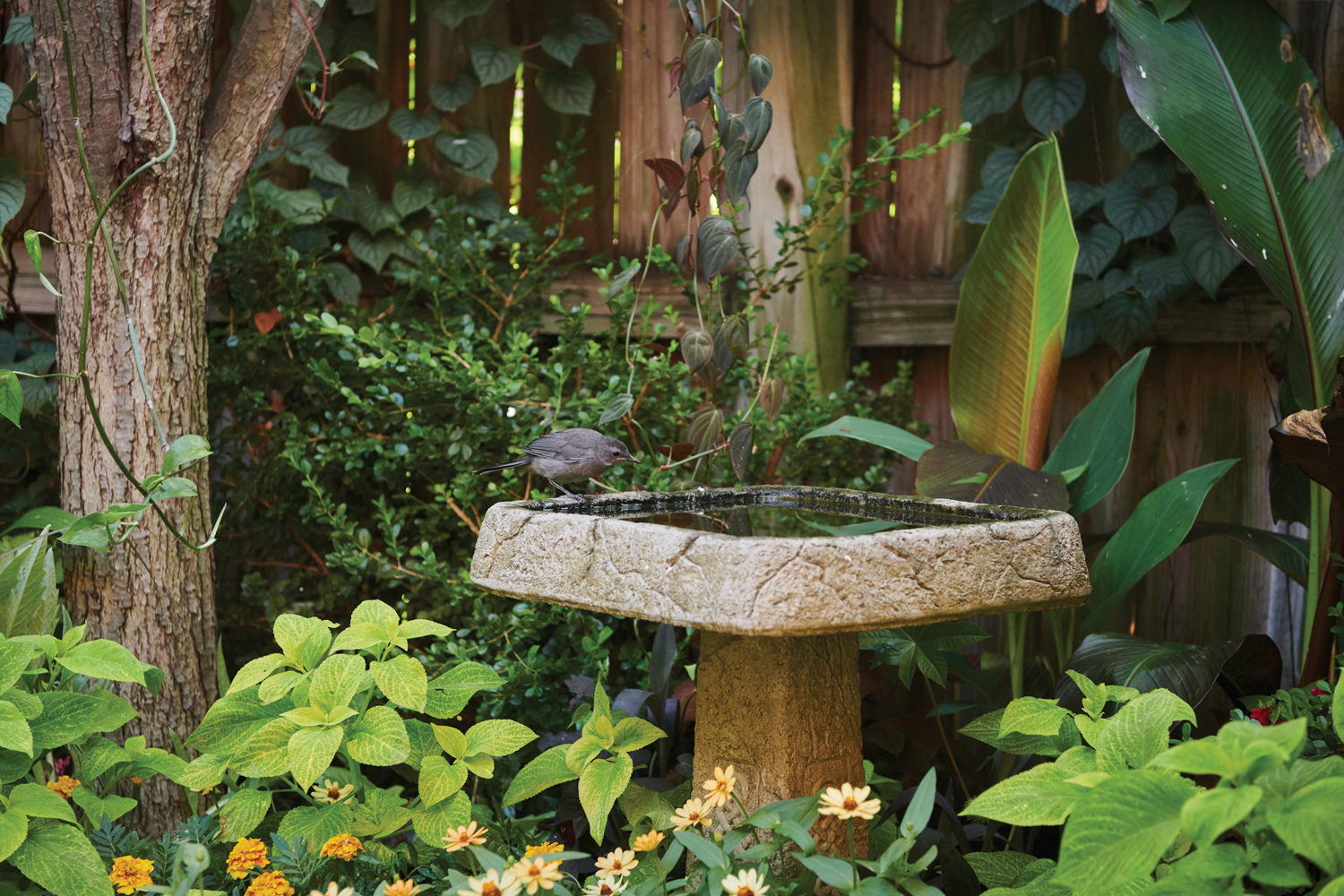
A birdbath is a favorite spot for the neighborhood birds to cool off. David uses the app, Merlin, to identify the chirpings of birds he does not recognize.
David was no neophyte where plants are concerned and is quick to point out that he loves them all and enjoys nothing more than going plant shopping. He traces his affinity for plants and gardening back to his childhood. “I’ve loved houseplants since I was a kid,” he says. “My mom, as well as my dad’s mother, were really into plants.” Visiting his grandparents in New York state provided him with an introduction to a doctor’s wife whose gardens were dedicated to herbs. “I loved hanging out with her,” David recalls. “She taught me all the names of the herbs she grew and their medicinal purposes.” Back home (Denver area), Good’s Greenhouse (now Esbenshade’s) was a favorite destination. “By the time I was in 8th or 9th grade, I had 400 plants growing in my bedroom,” he reports.
David’s fascination with plants continues; only now the focus is on tropicals. His very sizable collection winters over on the second and third floors of the house and spends the warm-weather months outdoors. “Funny thing about houseplants is that you bring them indoors and they become susceptible to all kinds of bugs and pests, but move them outside and they thrive,” he says, explaining that Mother Nature provides protection in the form of beneficial insects that prey on those attacking the plants.
David credits the emergence of the outdoor green room to Summer Rayne Oakes, whose résumé makes you wonder when the woman has time to eat or sleep. Oakes, who lives in a plant-filled (nearly 700 and counting) apartment in Brooklyn, was born near Clarks Summit (northeastern PA), where she developed an interest in science and nature. She graduated from Cornell University with degrees in environmental science and entomology.
Oakes’ varied interests – everything from gardening and cooking to interior design – led to blogging, a YouTube channel, social media sites, writing books, a show on Discovery (Planet Green) and podcasting. An interest in fashion led to modeling, through which she has become an advocate for sustainability in the industry and with it, recognition as the world’s first “eco-model.”
Oakes’ latest project is Flock, through which she and two partners are transforming 90 acres in the Finger Lakes region into a “living laboratory” that centers on sustainable and creative ways to “live life to the fullest.” (Garden tours for Summer 2024 are already sold out.)
It seems Oakes is no stranger to Lancaster. When David learned she was a recent visitor to Little Brook Orchids, he was crestfallen that he missed the opportunity to meet her. Information: summerrayne.net and flockfingerlakes.com.
While watching one of Oakes’ YouTube shows, David noticed that she has making space for the plants in her apartment via vertical gardening. In one area, rows of vertical plantings essentially created a green wall. “It resulted in one massive display of green leaves,” he explains. “She also had incorporated a drip irrigation system.”
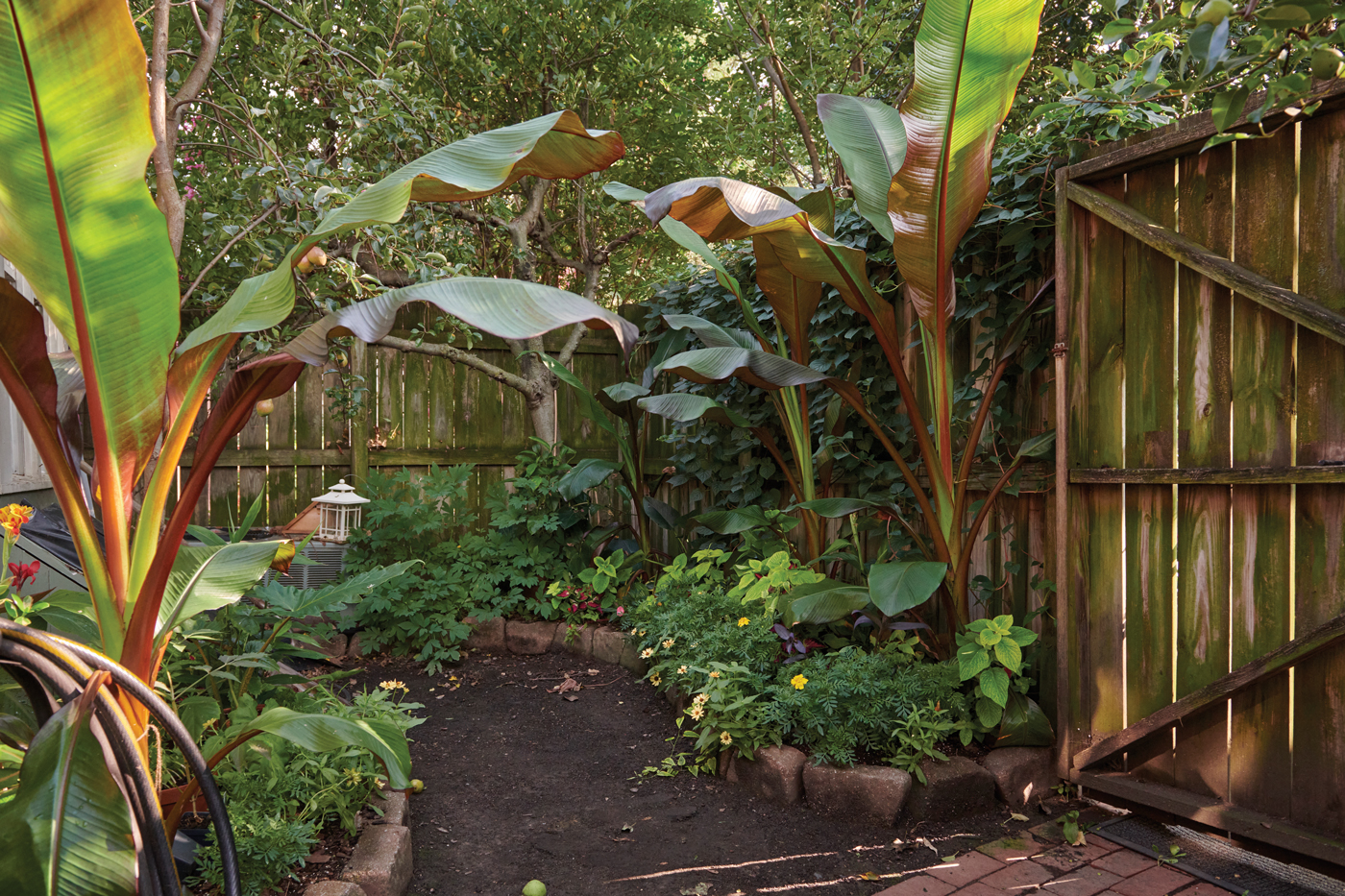
One section of the garden is devoted to banana trees, which deliver a decidedly tropical look to the space. David built the fence and installed brick walkways with the help of directions provided by YouTube.
David immediately thought of his fence that essentially serves as a wall on the street-side of the deck area. It had always needed “something” to merge it with the garden beds and container gardens. Inspired, he came up with the idea of outfitting the wall with circular wrought-iron holders that could hold terra cotta containers. Upon doing his homework, he determined “it would cost a fortune” to buy the number of holders he would need. It was back to the drawing board.
One day, while visiting Lowe’s, David thought to explore the plumbing department. That’s where he found the perfect solution: hose fittings. “I bought a couple and went home and began experimenting,” he says. Voilà! They worked … sort of. “They weren’t strong enough to hold the pots upright; instead, they tilted,” he continues. David ultimately arrived at a simple solution: blocks of wood screwed into the wall under the fittings kept the pots upright.
Maintenance is fairly easy. “I water the wall twice a week,” David reports. A natural drip-irrigation system exists in that excess water from the top row of plants filters down to the plants in the lower rows. The bottom of the display is comprised of smaller pots that fit into a tray-like area; here, the containers can absorb the water that fills the tray. “The plants love it,” David says. “They get light, there’s air movement and the porous pots retain water.”
David definitely qualifies as a dedicated gardener, as he is always making plans for the future. “I’m thinking of going in another direction and filling the beds with boxwood,” he says of bringing a different vibe to the 20-by-25-foot L-shaped backyard. At this news, Kevin, who admittedly has a black thumb where gardening is concerned, rolls his eyes, knowing that trips to greenhouses are in his future.
While Kevin gives David free reign where the garden is concerned, osmosis seems to be having an impact. “He’s getting to the point where he recognizes plants and knows their names,“ says David. “We’ll be somewhere, and I’ll pick something up and he’ll say, ‘Don’t you already have one of those?’” Kevin’s newfound talent may have credence, but knowing David, there’s a very good possibility that such a plant lurks somewhere in the house or garden.
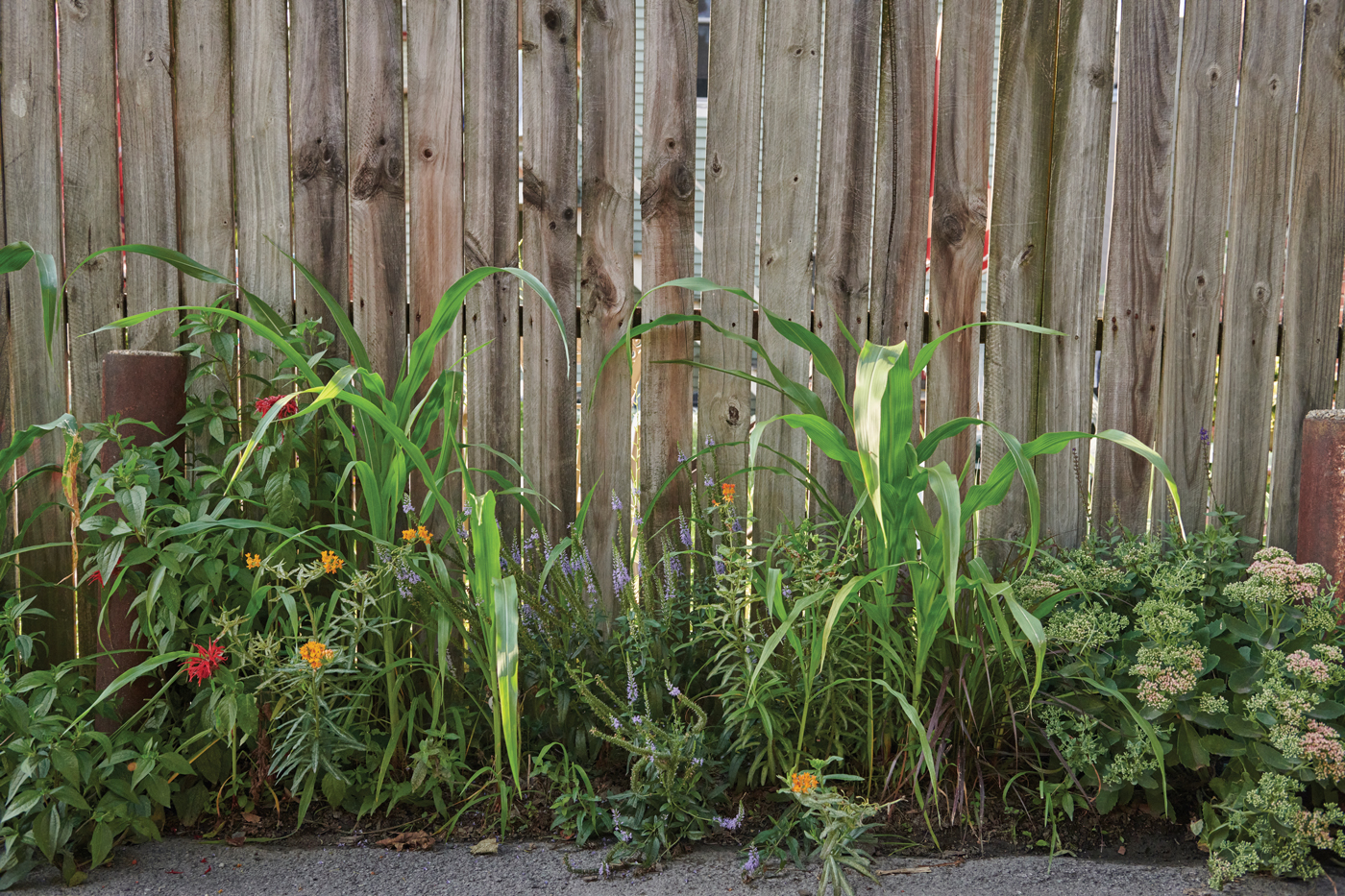
In the alley way, volunteer corn grows courtesy of the squirrels. David complements the corn plants with flowering annuals.
David’s Favorite Plant Destinations
David and Kevin love to jump in the car on a Saturday and visit well-known garden centers, as well as the small greenhouses that dot the rural areas of the county. “You never know what you’ll find!” David says of such adventures. What follows are a few of his favorites and what he feels are their specialties.
- Ken’s Gardens, Smoketown & Intercourse: garden plants.
- Conestoga Nursery, East Earl: trees and shrubs.
- Terrain, Glen Mills, Chester County: plants, containers and lunch/dinner in a greenhouse.
- Black Creek Greenhouses, East Earl: annuals and perennials.
- River Road Produce & Garden Center, Marietta: bedding plants, houseplants and tropicals.
- Mutschler’s Rare Plants, Birdsboro, Berks County: the name says it all.
- Little Brook Orchids, Lancaster: huge selection of orchids, plus supplies and services.
- Gallery Grow, Lancaster: houseplants, tropicals, supplies.
- He also suggests that veteran plant growers or those just getting started on their collections join the Facebook page, Plants of Lancaster County, PA. To date, the page boasts 4.5K members.





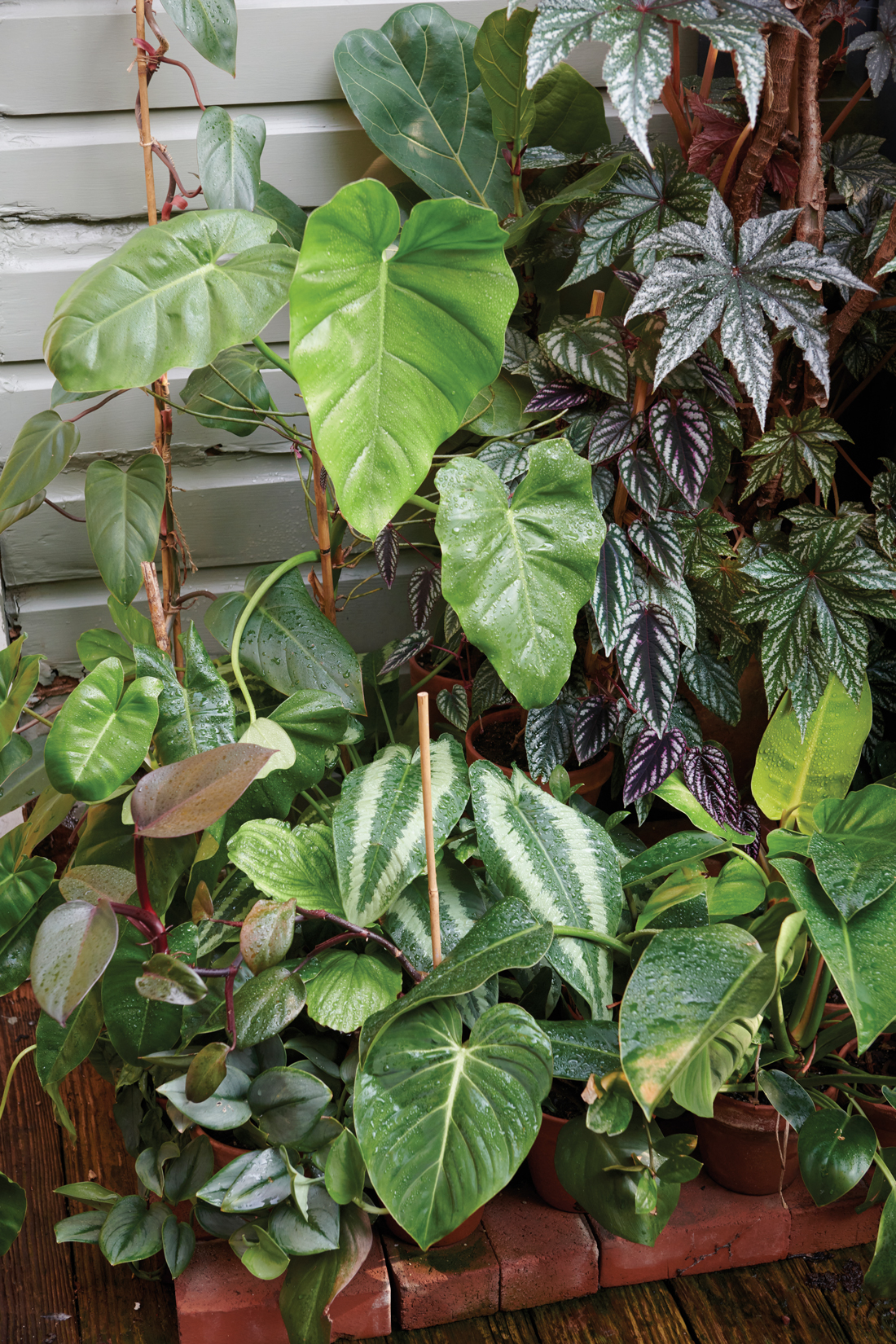
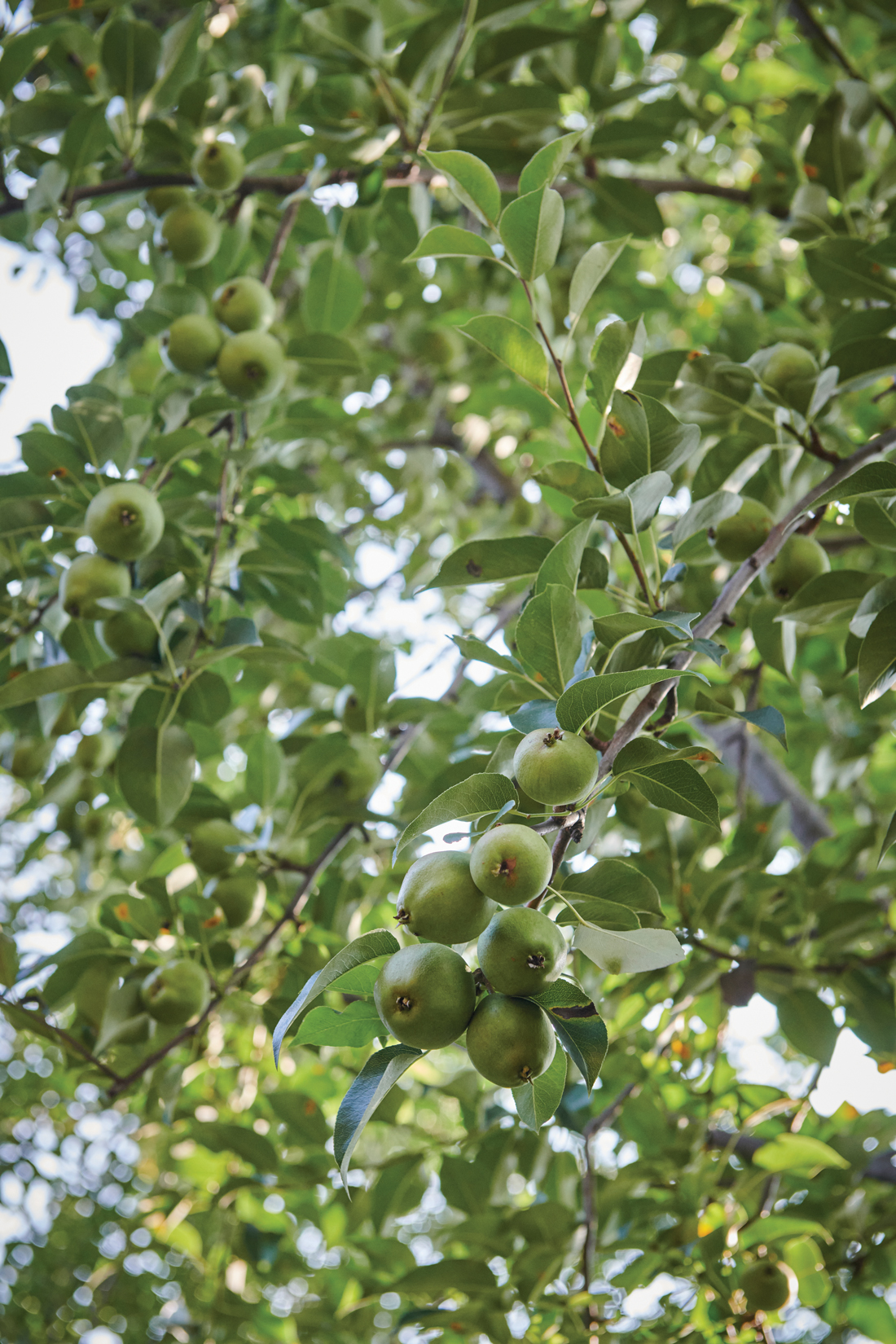
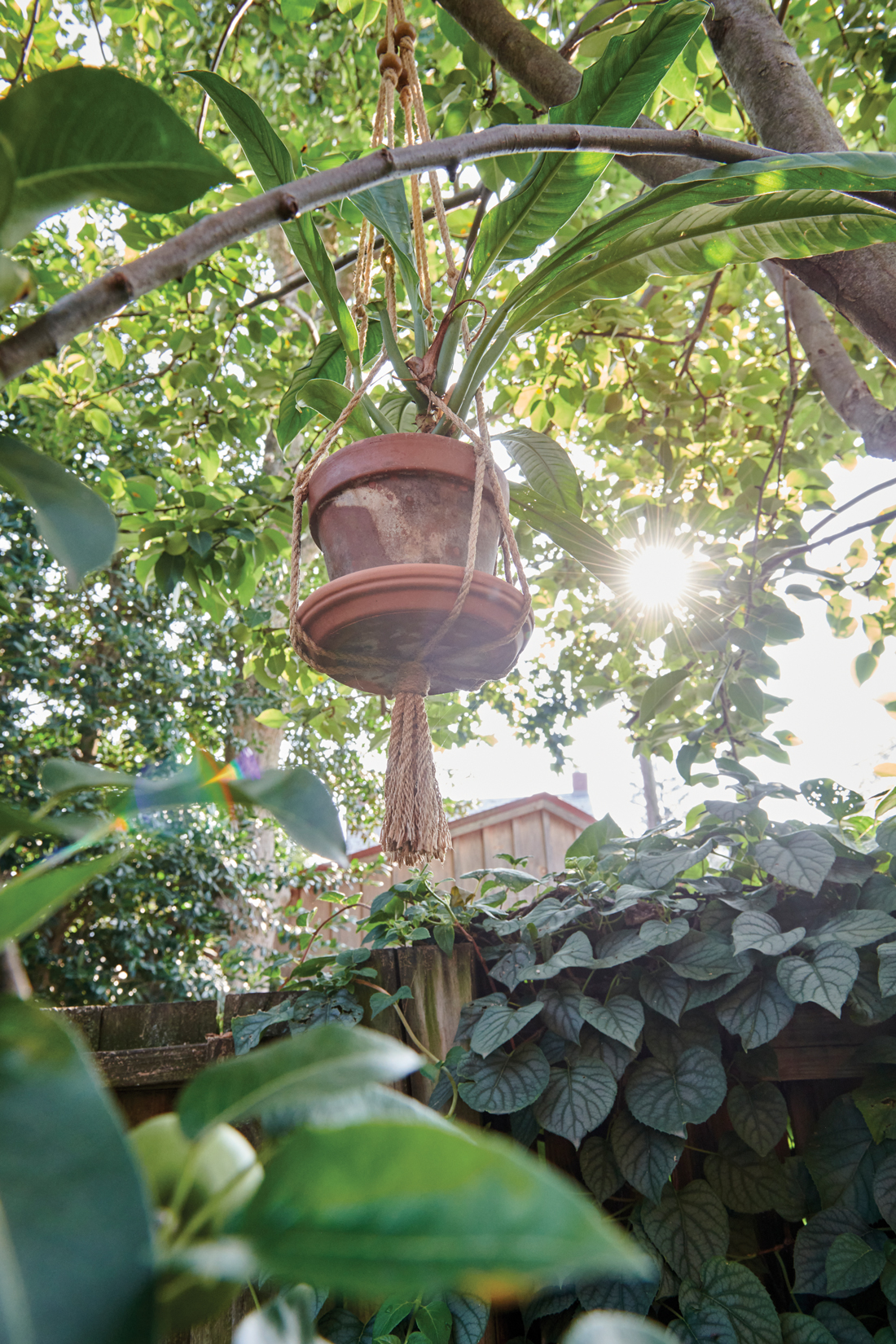
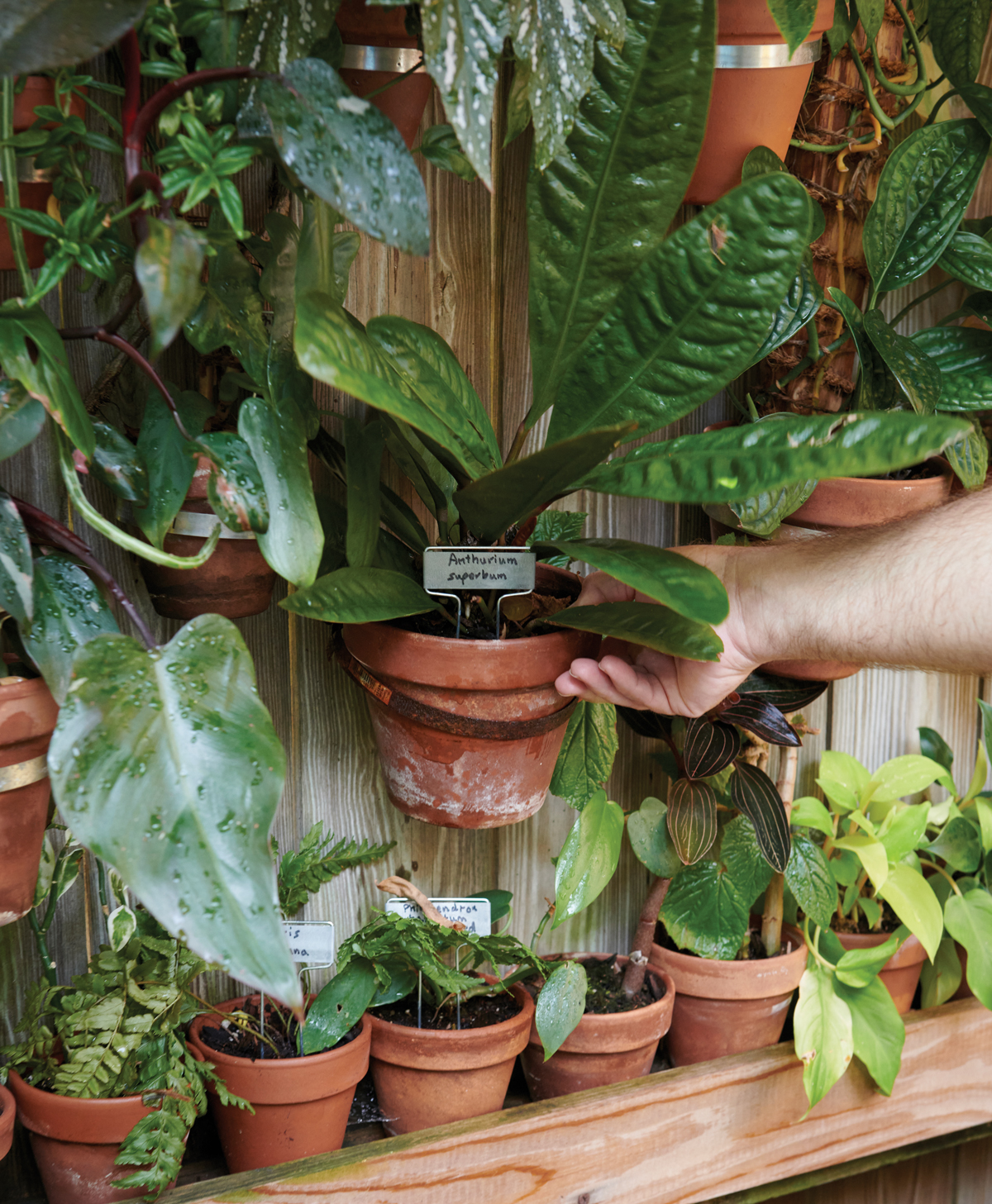
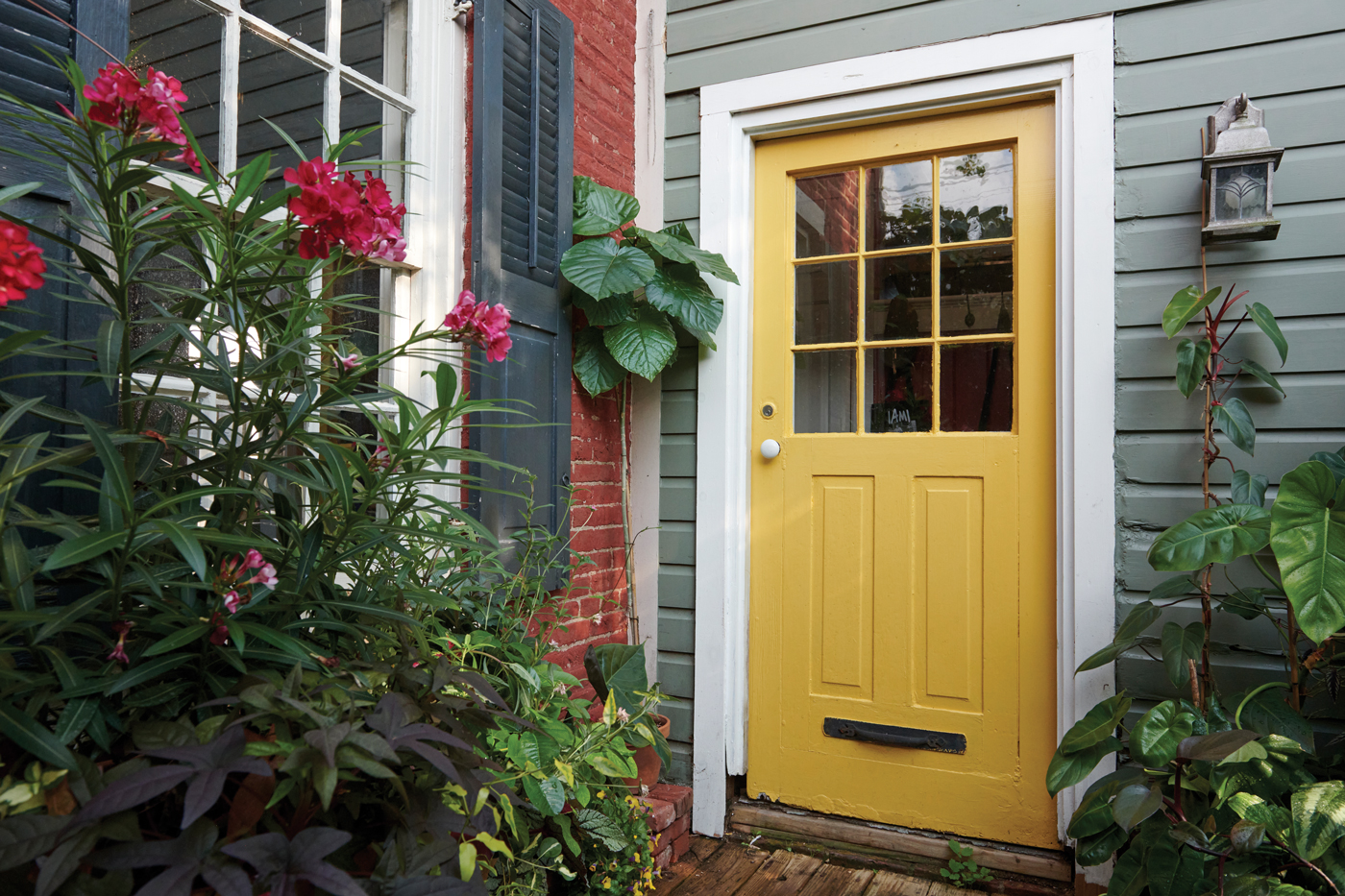
This is gorgeous and I am envious.